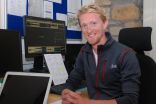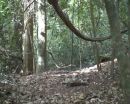(Press-News.org) As our ability to assess the pandemic risk from strains of influenza virus increases with the latest scientific developments, we must not allow ourselves to become complacent that the most substantial threats have been identified, argue an international consortium of scientists.
Influenza pandemics arise when a new virus strain – against which humans have yet to develop widespread immunity – spreads in the human population. There have been five such pandemics in the past 100 years, the worst of which – the 1918 Spanish Flu – cost 50 million lives worldwide. Of these pandemics, three are thought to have spread from birds and one from pigs. However, pandemic influenza strains represent only a tiny fraction of the total diversity of influenza viruses that exist in nature; the threats posed by the majority of these viruses are poorly understood. Assessing which viruses pose the greatest risk of causing the next human pandemic is an enormous challenge.
Steven Riley from Imperial College London, an author of the study, says: "There are too many strains of influenza viruses out there in non-human hosts to make it feasible to make preparations against each one. Instead, we need to get better at assessing the pandemic risks so that we know where best to focus our efforts. At the moment, this assessment is largely driven by a simple idea: animal viruses that cause sporadic human infections pose a greater risk than viruses that have not been documented to infect humans. But in fact, none of the viruses that caused the major pandemics of the last century were detected in humans before they emerged in their pandemic form."
Writing in the journal eLife, the scientists set out the steps that they consider necessary to increase our ability to assess pandemic risk. As influenza virus genome sequencing becomes cheaper, faster and more readily available, the data it generates has the potential to transform the research community's ability to predict the pandemic risk. However, it remains extremely difficult to predict just from a virus's genome what symptoms it will elicit in its host – and hence how deadly the virus is. The researchers call for better integration of experimental data, computational methods and mathematical models, in conjunction with refinements to surveillance methodology.
However, they say that scientific insights into non‐human influenza viruses must not give way to complacency that the most substantial threats have been identified and characterized. They point out that several recent strains including the 2009 H1N1 "swine flu" pandemic virus and the recently emerged H7N9 viruses in China highlight the importance of remaining vigilant against as-yet unrecognized high risk viruses and the value of surveillance for influenza viruses in humans.
"No one can say with anything close to a hundred percent certainty when or where the next pandemic will start or which virus will cause it," says Dr Colin Russell from the Department of Veterinary Medicine at the University of Cambridge. "We are getting much better at identifying and assessing potential threats, but we must be vigilant about surprises lurking around the corner.
"We need to be prepared for a swift response, with coordinated action, to help mitigate the spread of the next pandemic virus. Without developing this ability to respond, we will have spent billions building systems just for watching the next pandemic unfold."
INFORMATION:
The research was supported in part by the Research and Policy for Infectious Disease Dynamics program of the US Department of Homeland Security and the National Institutes of Health.
Scientists 'must not become complacent' when assessing pandemic threat from flu viruses
2014-10-15
ELSE PRESS RELEASES FROM THIS DATE:
'Dressing' in superconductors
2014-10-15
"Imagine a heavy ball rolling on an elastic net: what happens?" asks Daniele Fausti, researcher at Elettra Sincrotrone of Trieste and the University of Trieste. That's how Fausti explains the concept of "dressing" in physics: "the ball's movement is slowed down because each movement is accompanied by a deformation of the net: the sphere no longer behaves like a free sphere (i.e., that rolls on a rigid plane), but like a sphere that is 'dressed' by the net's deformation". Why is this "dressing" concept so important? "Because it's what physicists believe explains superconductivity ...
New way of syncing music to video will revolutionize TV ads
2014-10-15
A UNIVERSITY of Huddersfield researcher has shown that tiny tweaks to the soundtrack can make TV adverts much more memorable, increasing their commercial impact.
The necessary adjustments are imperceptible to the ear and eye. But Andy Rogers – in the last stages of his PhD project at the University – has proved that there are considerable perceptual improvements if the synchronisation between the music and the visual content of the commercial is altered by just tenths of a second.
Joined by his PhD supervisor, Dr Ian Gibson, Andy has just presented his ...
Chimpanzees have favorite 'tool set' for hunting staple food of army ants
2014-10-15
VIDEO:
This video shows a chimpanzee who has constructed a tool with which to investigate a camera (Nimba mountains, Guinea).
Click here for more information.
West African chimpanzees will search far and wide to find Alchornea hirtella, a spindly shrub whose straight shoots provide the ideal tools to hunt aggressive army ants in an ingenious fashion, new research shows.
The plant provides the animals with two different types of tool, a thicker shoot for 'digging' and a more ...
Astronomers spot faraway Uranus-like planet
2014-10-15
COLUMBUS, Ohio—Our view of other solar systems just got a little more familiar, with the discovery of a planet 25,000 light-years away that resembles our own Uranus.
Astronomers have discovered hundreds of planets around the Milky Way, including rocky planets similar to Earth and gas planets similar to Jupiter. But there is a third type of planet in our solar system—part gas, part ice—and this is the first time anyone has spotted a twin for our so-called "ice giant" planets, Uranus and Neptune.
An international research team led by Radek Poleski, postdoctoral ...
Three hours of life per euro
2014-10-15
This news release is available in German. Public spending appears to have contributed substantially to the fact that life expectancy in eastern Germany has not only increased, but is now almost equivalent to life expectancy in the west. While the possible connection of public spending and life expectancy has been a matter of debate, scientists at the Max Planck Institute for Demographic Research (MPIDR) have now for the first time quantified the effect. They found that for each additional euro the eastern Germans received in benefits from pensions and public health ...
Novel mechanism affecting cell migration discovered
2014-10-15
VIDEO:
Fruit fly border cells form clusters of six to eight cells, which display directional migration during oogenesis. Migration of border cells in egg chambers can be examined in detail by...
Click here for more information.
Cell migration is important for development and physiology of multicellular organisms. During embryonic development individual cells and cell clusters can move over relatively long distances, and cell migration is also essential for wound healing and many ...
Effects of high-risk Parkinson's mutation are reversible
2014-10-15
Researchers from the University of Sheffield have found vital new evidence on how to target and reverse the effects caused by one of the most common genetic causes of Parkinson's.
Mutations in a gene called LRRK2 carry a well-established risk for Parkinson's disease, however the basis for this link is unclear.
The team, led by Parkinson's UK funded researchers Dr Kurt De Vos from the Department of Neuroscience and Dr Alex Whitworth from the Department of Biomedical Sciences, found that certain drugs could fully restore movement problems observed in fruit flies carrying ...
Scientists discover carbonate rocks are unrecognized methane sink
2014-10-15
CORVALLIS, Ore. – Since the first undersea methane seep was discovered 30 years ago, scientists have meticulously analyzed and measured how microbes in the seafloor sediments consume the greenhouse gas methane as part of understanding how the Earth works.
The sediment-based microbes form an important methane "sink," preventing much of the chemical from reaching the atmosphere and contributing to greenhouse gas accumulation. As a byproduct of this process, the microbes create a type of rock known as authigenic carbonate, which while interesting to scientists was ...
Australians not prepared for dying with dignity
2014-10-15
Just 14 per cent of the population has an Advance Directive, or "living will", detailing their end of life treatment and care preferences, according to an article led by QUT Australian Centre for Health Law Research director Professor Ben White.
This research is from a joint University of Queensland, QUT and Victoria University study, supported by the Australian Research Council in partnership with seven public trustee organisations across Australia.
An Advance Directive is a legal document in which a person specifies what treatment or end of life care they want, when ...
Partisan lenses: Beauty lies in your political affiliation
2014-10-15
ITHACA, N.Y. – Have you ever noticed you find your candidate for political office more attractive than the opponent? New research from Cornell University shows you're not the only one.
"We showed pictures of familiar and unfamiliar political leaders to voters in two different samples and found that familiarity and partisanship each significantly influenced how candidates were perceived," said the study's lead researcher, said Kevin M. Kniffin, a postdoctoral research associate at Cornell's Dyson School of Applied Economics and Management. "For example, Democrats ...



